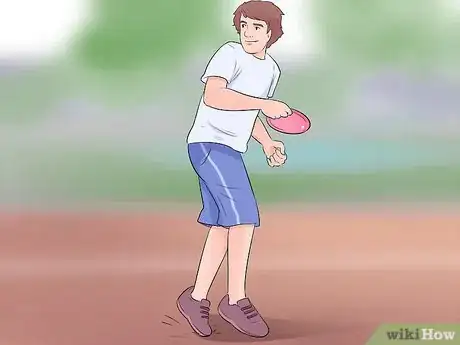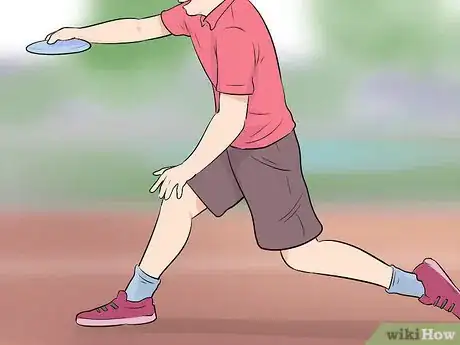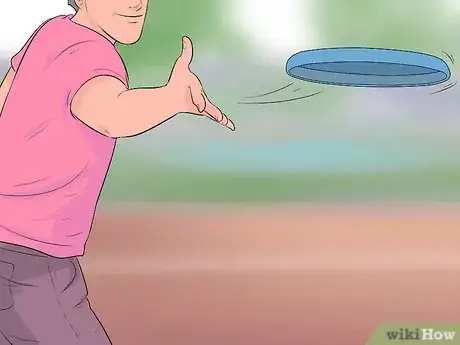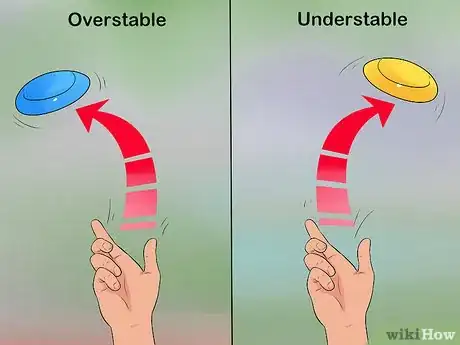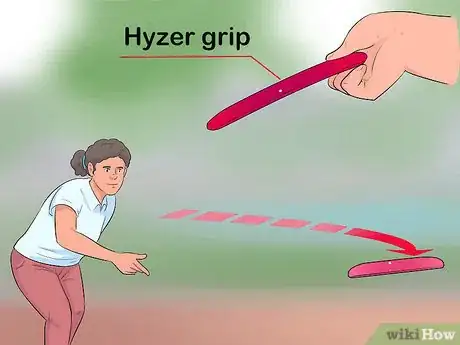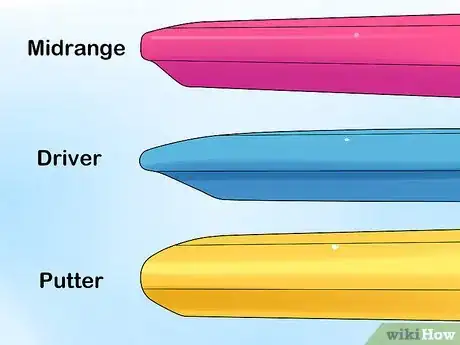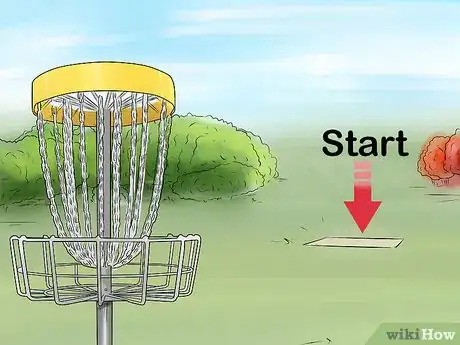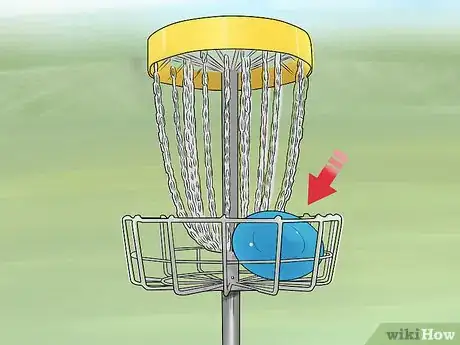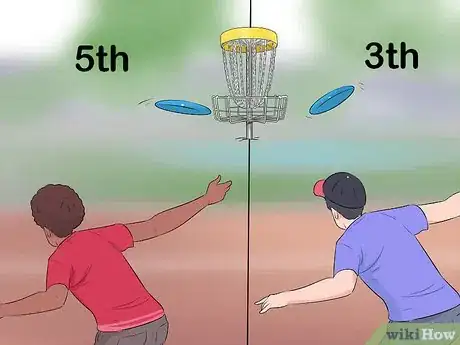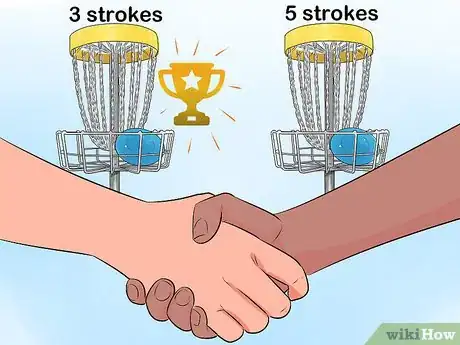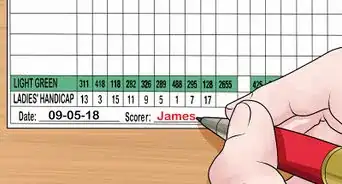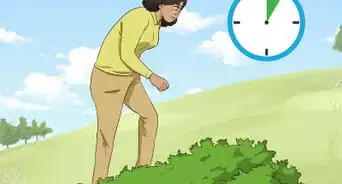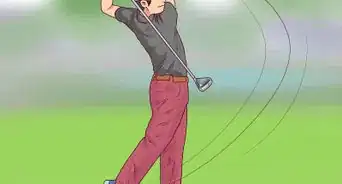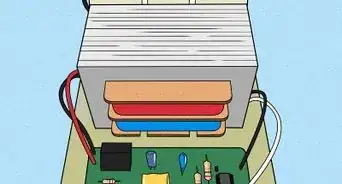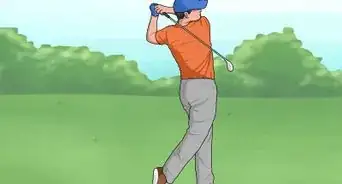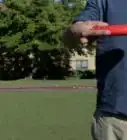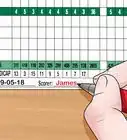This article was co-authored by wikiHow Staff. Our trained team of editors and researchers validate articles for accuracy and comprehensiveness. wikiHow's Content Management Team carefully monitors the work from our editorial staff to ensure that each article is backed by trusted research and meets our high quality standards.
There are 9 references cited in this article, which can be found at the bottom of the page.
wikiHow marks an article as reader-approved once it receives enough positive feedback. In this case, 85% of readers who voted found the article helpful, earning it our reader-approved status.
This article has been viewed 130,663 times.
Learn more...
Disc golf was invented in California in the 1960s as a cheaper, easier version of golf. Since then, the sport has exploded, with courses across the country and discs in most major sport retailers. Easy to pick up and play and much cheaper and faster than normal golf, disc golf is a great way to get out and have some fun and exercise.
Steps
Throwing a Disc
-
1Grip with your four fingers under the disc and thumb near the edge on top. You want a nice, tight grip on the disc, as you'll be "ripping" it out of your hands when you release the disc. Your four fingers should all be inside the lip on the underside of the disc. Your thumb is on top, on the softer part of the disc and close to the edge.
- Make sure your arm and wrist are loose, allowing them to move freely as you throw.
- For precision shots, some players extend their forefinger along the outside rim of the disc. This lowers power but increases accuracy for some people during putts or mid-range shots.
-
2Give yourself a 3-step run-up for a drive, ending on your dominant foot. So, if you're a righty, you start your run up with the right foot. Square your shoulders up to the basket and work on taking three smooth steps up.
- This is sometimes called the "X-Step."
Advertisement -
3Step forward with your dominant foot, raising the disc to roughly chest height. This is step one of a good drive. If you're a righty, step with the right foot and raise the disc just below your pecs. As you turn, your body will naturally turn away from the basket.
-
4Step ahead with the left foot, pointing it perpendicular to the basket. As you do, continue rotating your body so that your back is turning towards the basket in front of you. Again, this is for a righty. This naturally coils your body back, turning your shoulders, hips, and the disc back behind you.
- You should end this step with the disc behind you, body swiveled away from the basket. Think of a spring or coil being wound up, ready to release with power.
-
5Take a final step forward, shifting your weight onto this foot as your body uncoils. As you take this final step, let your body naturally rotate back towards your front foot. Keep the disc "flat" the other time, leaving it at the same height as you started at as the disc comes around your chest. Your back leg will naturally pull forward, and your shoulders, hips, and head should turn to face the basket.
-
6Pull the disc straight across your body as you release. You don't want to arc the disc around you, nor do you want to windmill or curl around the disc. For a straight throw, you want to pull the disc straight across your chest. To do so, start by pointing the disc straight ahead of you, at your target. With your first step, pull the disc straight back as your turn. For the release, bend at the elbow as you pull the disc in a straight line towards the basket. As you pass your chest, you'll feel your elbow naturally unbending in order to keep the disc on a straight line.[1]
-
7Throw your arm fluidly at the target, releasing it when the disc points directly at the target. You want to think about your power coming smoothly from your hips, moving up from your footwork to your wrist. A good way to think about this is by thinking about your body as it "uncoils." The smoother you make these motions, the better your throw. In order, your body should rotate from the hips, through the shoulders, along the elbow, and finally releasing with a flick of the wrist. If you let your momentum carry your body around in this order your throws will be smooth and accurate.
- This is a bit like a baseball batter uncoiling from the feet up to hit a fastball.
-
8Follow through with your throwing hand palm-up, pointing to the target and letting your body spill forward. As you finish, make sure you keep your palm up. This will keep you from turning or spinning the disc on release, which leads to inaccurate throws.
Improving Your Throws
-
1Grow your disc collection for specific shots and properties. There are thousands of discs on the market, and many of them have remarkably different flight patterns. Each disc is made for a certain type of shot and thrower, and you should experiment with different styles. When shopping, it is helpful to understand the basic terminology:
- Overstable means that the disc fades strongly to the left for right-handed throwers, and right for left-handers, when thrown backhand.
- Understable means that a disc fades to the right for righties, and to the left for lefties, when thrown backhand.
- Speed & Glide tells you how hard you can throw a disc to get distance on it, and how long it stays in the air. Higher speed discs are harder to throw accurately, and high glide is harder to control. However, when mastered, you will throw for greater distances overall.
- Basic vs. Premium Plastics determine how long a disc will last after landing, hitting trees, and wear and tear. Higher quality plastics often have better grip, as well.[2]
-
2Work on a strong, flat throw for maximum distance on your backhand. A long-distance throw comes not from working out, but from smooth, consistent technique. The best advice is to keep your disc "flat," or perpendicular to the ground. As the disc rises, it catches more wind and almost always hooks off, heading sharply to the left with right-handers.
- When releasing, focus on keeping the nose of the disc down. 10-20 feet off the ground generally leads to the best throws.
- If the nose is up, the disc usually rises and then breaks hard down to the left (for righties).
-
3Angle the disc to curve it around tricky objects. Curving in disc golf is called "hyzer," and it is accomplished depending on the angle of the disc. Knowing these terms, and how to accomplish each type of throw, greatly increases your skills and shots on the links. All of these descriptions are for a right-handed thrower, but easily reverse for lefties.
- Hyzer: When the outside edge is lower than your grip, tilting the disc to the left. This makes the disc curve left when thrown.
- Anhyzer: When the grip edge is lower than the outer edge, tilting the disc to the right. This makes the disc curve to the right.
- S-Curve: Throwing a nose-up anhyzer throw -- remember that a nose up disc breaks left near the end but an anhyzer breaks right in the beginning. This lets you get a curvy S-shaped path if you can pull it off.
-
4Understand that you don't always want to approach the disc straight on. Learning to hone your hyzers in combination with your throwing angle separates the pros from amateurs. Note how your drives normally break and compensate accordingly.
- Need to curve the disc left? Start on the back left of the tee and approach diagonally to the upper right, still aiming towards the basket. This will naturally tilt your disc slightly.
- Need to get the disc up high, like up a hill? This will point your nose up, which drags the shot left. Approach diagonally towards the right to compensate.
-
5Focus on technique, not full power, to throw it further. It seems paradoxical, but most disc golfers note that they hit longer drives when they use only 80% of their power, focusing the rest of their energy on perfect technique. Trying to throw too hard usually leads to tense muscles, which greatly impacts your accuracy.
- The number one indicator of disc distance is the arm speed used to throw. This is important to note, as speed is usually a factor of form -- having a relaxed but concise throwing motion without locking up or getting tense --and not a factor of pure strength.
-
6Learn other types of throws to greatly increase your range. The backhand throw will suffice for 90% of your shots, if not more, but that doesn't mean you can't extend your shot selection to hit tricky angles. Some of the most common other shots include:
- Forehand: Instead of turning your body in, then uncoiling, you point with your non-throwing foot, then follow through across your body. This has less power, but reverses your normal curve on the shot, making it a good way to get a hook or slice without trying having to point the nose in a remarkably different angle.
- Hammer Throw: You throw the disc overhand, up high, releasing with a snap of the wrist as the disc gets above your head. Hold the disc like normal, and bring it back behind your head, turning it so that the top of the disc points to the ground. With a short overhand throw (like you were throwing a hammer), toss the disc up, keeping the top of the disc pointed to the ground. This leads to a short, straight, and high shot perfect for getting over an obstacle right in front of you.[3]
Getting Started in the Sport
-
1Get yourself a basic set of 1-3 discs. An initial set usually consists of a Driver, a Mid-range, and a Putter. There are a few select courses that have pro shops, some that even rent discs. However, this is the exception and not the rule, so it is advised to find a local retailer (Dick's and Sam's each carry discs) or purchase a beginner's set online. You should get three discs.
- Midrange cover everything in-between your drive and final putt. If you're only looking to get one disc, get a midrange, like the Roc or the Buzzcraft. They are shaped like normal Frisbees, easy to throw, and stay relatively straight. If offered, aim for a "stability rating" at or below 1.0.
- Drivers have a sharp, pointed rim. They go the farthest but are the hardest to keep accurate. Again, beginners should aim for a stable, basic driver to begin with. Do not get an overstable driver to begin -- these tend to curve harshly.
- Putters: are soft and round. They glide well but don't throw incredibly far, allowing your to drift towards the basket without overshooting.
-
2Find a course near you by looking at parks, campgrounds, campuses, and rec centers. Most disc golf courses are free to play, and almost none require calling or reserving ahead of time. If you're unsure about the courses near you, check out DG Course Review.com, a user-made website listing all known courses along with ratings, maps, pictures, and even some shot recommendations for tricky holes.
- When you arrive, look to see if there is a course map and grab one now. Courses aren't always well mapped. If there is only a single map, take a picture with your phone
-
3Start each shot on the flat tee at the beginning of each hole. On some courses there will be multiple tees depending on your skill level, with those closer to the hole made for beginners and those far away for advanced players. Before shooting, note the location of your basket by consulting the diagram near the tee. DG courses can be tight, leading to basket confusion if you're unsure of the hole.
-
4Take every shot within one step of where the last shot landed. You can change discs every shot, but you must stay within a pace of your disc. Usually, this means leaving your back foot near the disc, then leaning either way if you need help to get around an object. You can take a run-up to any shot, but you must release the disc within a food of where the last shot landed.
-
5Note the out-of-bounds (OB) areas on each hole, adding a stroke if the disc lands here. If there are hole diagrams at the tee, they will indicate where is OB. Water is considered OB as well, so if you sink a disc you must add a stroke to your current hole. If you retrieve a disc from OB, you take your next throw from the closest in-bounds areas to where your disc sailed out-of-bounds. It should be the closest open area, but you should not move any closer to the hole than the spot where you went OB.[4]
-
6Finish the hole by landing the disc in the cage at the bottom of the basket. You do not simply need to hit the chains, although they do help drop the disc into the hole. The disc must land in the cage in the basket in order to be counted.
-
1Add up the number of throws you took to hit the basket to your score, keeping track of each hole. These are called "strokes," and they work just like normal golf. Every throw equals one stroke, and the lowest score wins. So, if you took four throws to finish a hole, then you have four strokes. If the next hole takes you three strokes, your score is now seven.
- Remember to add strokes for OB or water traps. So, if you take four throws to hit the basket, but one of them went OB, then the hole took five strokes.
-
2Determine throwing order by the lowest score on the previous holes. Whoever won the previous hole throws first on the next one. If there is a tie, then the player with the lowest total score throws next. If there is still a tie, then alternate players with the first throw until someone takes the lead.[6]
-
3Crown the winner as the person who took the least total strokes throughout the course. Just like golf, you want to have the lowest score in order to win. This simply means it took the winner fewer throws than everyone else to complete the same holes, making them the day's leader.[7]
-
4Remain courteous, helpful, and clean to keep our free courses open to the public. Disc golf is an amazingly community-driven sport. Most courses are free because people volunteer to keep them clean and playable, and users share the course graciously. Never act like you own the course, and always remember to share the inclusive, kind, and DIY spirit that makes the sport so special by:
- Keeping quiet, especially when others are throwing
- Letting faster groups of players "play through," by waiting one hole for them to pass you.
- Pick up trash and respect local trees, plants, and wildlife.
- Communicate when disc may hit someone, and stand behind throwers whenever possible.[8]
Warnings
- Do not store your discs in a high-temperature area as this will warp the plastic, causing erratic flight.⧼thumbs_response⧽
- Avoid throwing your disc onto pavement or any other hard surface, as this will chip the plastic and decrease it's flight efficiency⧼thumbs_response⧽
- YOU WILL LOSE DISCS! This is a fact that every disc golfer must deal with. To minimize this buy brightly colored discs and keep track of the flight path of your discs.⧼thumbs_response⧽
Things You'll Need
- A set of discs
- A disc golf course or portable target
- Approx. 90 minutes for a full 18 holes
References
- ↑ http://www.discgolf.com/how-to-play-disc-golf/
- ↑ https://infinitediscs.com/blog/disc-buying-guide/
- ↑ https://www.youtube.com/watch?v=JyBOiCfgAa0
- ↑ http://www.discgolf.com/how-to-play-disc-golf/
- ↑ http://www.discgolf.com/how-to-play-disc-golf/
- ↑ http://www.discgolf.com/how-to-play-disc-golf/
- ↑ http://www.pdga.com/introduction
- ↑ http://www.discgolf.com/disc-golf-rules-for-recreational-play/
- Videos provided by Steeda's Channel



